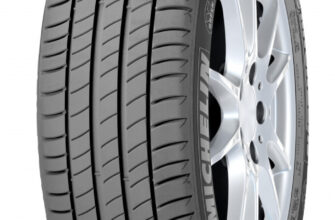Review of the best according to the editorial board. On the selection criteria. This material is subjective and does not constitute advertising and does not serve as a purchase guide. Before buying, you need to consult with a specialist.
The popular boxer station wagon is produced in the fourth generation – and it is already eight years old, so a large number of Foresters have already left the warranty, and it is logical for their owners to refuse expensive service in dealerships and original engine oil. Traditionally, when choosing a replacement, we start with the factory operating instructions – it offers three options:
- For a gasoline engine without turbocharging, it is necessary to use engine oils with a viscosity of SAE 0W-20, that is, our choice is directly limited to low-viscosity 'energy-saving' oils, which is also confirmed by the instruction – it requires that the oil be certified for API SM / SN classes with the mandatory presence of an inscription Energy Conserving label or ILSAC GF-4 / GF-5.
- For a gasoline turbo engine, as expected, an oil with a higher high-temperature viscosity – SAE 5W-30 is required with the same requirements for quality classes. In the northern regions of Russia, of course, it makes sense to talk about the choice of SAE 0W-30 oils.
- Diesel Foresters require the use of SAE 0W-30 oil strictly if it has ACEA C2 or C3 quality classes.
- Let us dwell on the last point more attentively. The fact is that oils of C2 and C3 classes have a serious difference in high-temperature HTHS viscosity – with the same SAE index, C2 oil at elevated temperatures and loads will have a lower viscosity than C3 oil. Naturally, in such conditions, all other things being equal, ACEA C3 oil will provide more reliable engine protection – and since the plant allows the use of oils of both classes, we will prefer the more viscous C3 oils when choosing.
- Rating of the best engine oils for Subaru Forester
- Best oils for Subaru Forester with naturally aspirated gasoline engine
- Shell Helix Ultra SN 0W-20
- Advantages
- disadvantages
- IDEMITSU Zepro Eco Medalist 0W-20
- Advantages
- disadvantages
- G-Energy Far East 0W-20
- Advantages
- disadvantages
- SUBARU SN 0W-20
- Advantages
- disadvantages
- Best oils for Subaru Forester with a gasoline turbo engine
- Mobil 1 X1 5W-30
- Advantages
- disadvantages
- Motul 8100 Eco-lite 5W-30
- Advantages
- disadvantages
- Lukoil Genesis Armortech JP 5W-30
- Advantages
- disadvantages
- ENEOS Premium Touring 5W-30
- Advantages
- disadvantages
- Best oils for Subaru Forester with diesel engine
- Shell Helix Ultra ECT C2 / C3 0W-30
- Advantages
- disadvantages
- Castrol Edge Turbo Diesel 0W-30
- Advantages
- disadvantages
- Mobil 1 ESP 0W30
- Advantages
- disadvantages
- TOTAL QUARTZ INEO EFFICIENCY 0W-30
- Advantages
- disadvantages
Rating of the best engine oils for Subaru Forester
| Nomination | a place | Name of product | price per liter |
| BEST OILS FOR SUBARU FORESTER WITH ATMOSPHERIC PETROL ENGINE | 1 | SHELL HELIX ULTRA SN 0W-20 | RUB 535 |
| 2 | IDEMITSU Zepro Eco Medalist 0W-20 | RUB 789 | |
| 3 | G-Energy Far East 0W-20 | 430 RUB | |
| 4 | SUBARU SN 0W-20 | RUB 608 | |
| Best oils for Subaru Forester with a gasoline turbo engine | 1 | Mobil 1 X1 5W-30 | 640 RUB |
| 2 | Motul 8100 Eco-lite 5W-30 | 701 RUB | |
| 3 | Lukoil Genesis Armortech JP 5W-30 | RUB 510 | |
| 4 | ENEOS Premium Touring 5W-30 | 453 r | |
| Best oils for Subaru Forester with diesel engine | 1 | Shell Helix Ultra ECT C2 / C3 0W-30 | 655 RUB |
| 2 | Castrol Edge Turbo Diesel 0W-30 | 890 RUB | |
| 3 | Mobil 1 ESP 0W30 | RUB 781 | |
| 4 | TOTAL QUARTZ INEO EFFICIENCY 0W-30 | RUB 681 |
Best oils for Subaru Forester with naturally aspirated gasoline engine
Shell Helix Ultra SN 0W-20
Rating: 4.9
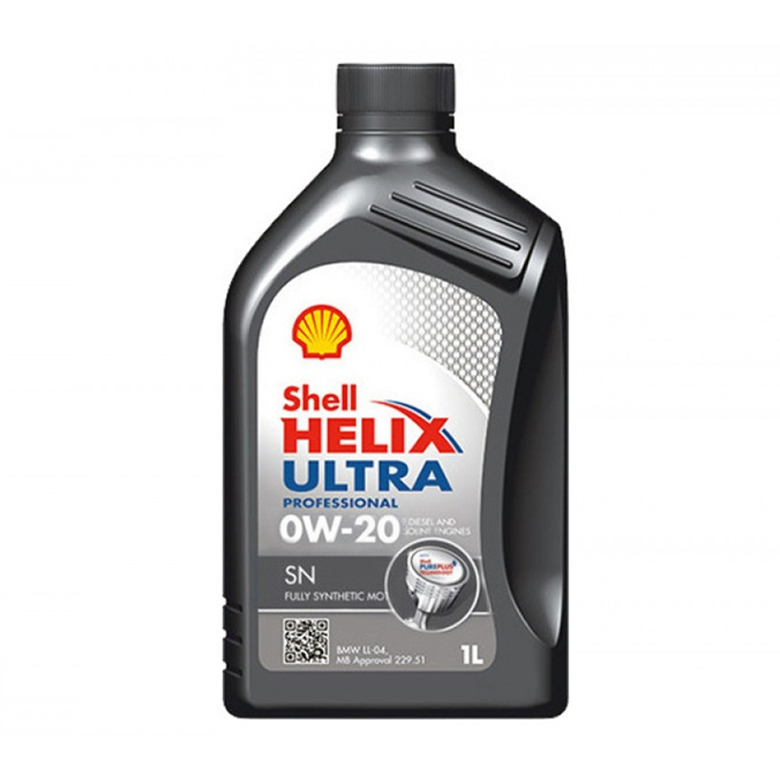
The oil complies with the API SN quality class, has the ILSAC GF-5 class and the required viscosity, therefore, it fully meets the formal requirements Subaru for atmospheric gasoline Forester. In the specification sheet, Shell indicates a decent pour point (-48 degrees), high-temperature viscosity at the same time is 8.8 mm2 / s, taking into account the declared viscosity index of 174, the oil can be called 'liquidish' at high heat load, but fully meets the requirements of the standard .
Laboratory analysis gives an even lower pour point: -54 ° C. The gap with the original engine oil Subaru (see below) is 11 degrees, and this is a very serious difference, especially if the battery is no longer new: where, on the original oil, the starter will already have difficulty with normal crankshaft cranking Shell will make the engine start easier. Alkaline oil by analysis – 9 mg KOH / g, the declared high-temperature viscosity also overlaps with the real one, which is almost at the upper limit of the standard requirements. Collectively, the oil can be called a potentially high-resource oil. Spectral analysis indicates the use of GTL as a base oil – it is not a hydrocracked oil, which is another plus in terms of stability of properties during vehicle operation.
Taking into account the usually short service life of low-viscosity oils, it is reasonable to carry out tests of workings at around 8 thousand kilometers. Here Shell clearly demonstrates the advantages of a GTL base over a hydrocracking base: by this mileage it retains a normal high-temperature viscosity and a high base number, therefore, such a mileage is normal for it, and we can talk about the reality of replacement times of 10-12 thousand kilometers, this is very good result. At the same time, a four-liter Shell canister costs more than a thousand rubles less than the original oil, which is worse in terms of basic characteristics and resource. It makes sense to shorten the intervals only on cars with six-figure mileage – in such conditions, the base number of the oil drops faster. Therefore, Shell's victory and an unequivocal recommendation from our experts are more than logical.
Advantages
- Very low pour point
- High base number
- Large resource that allows you not to shorten the replacement time
disadvantages
- High volatility, but within reason
IDEMITSU Zepro Eco Medalist 0W-20
Rating: 4.8

Idemitsu oils are popular in many respects precisely because of the presence in their line of 'typically Japanese' – low-viscosity and certified according to the ILSAC GF-5 quality class. Among them, the requirements Subaru are met by Zepro Eco Medalist, in terms of prices almost comparable to Shell. Moreover, they are comparable not only in terms of prices: Idemitsu also demonstrates in laboratory analysis of samples an excellent pour point of -52 degrees, which promises a good resource and high engine purity, the base number of 8.8 mg KOH / g. Its high-temperature viscosity is slightly lower than that of Shell (8.3 mm2 / s), but in practice this difference is imperceptible. The viscosity index for hydrocracking oil is high – 214. In the analysis, only the ash content did not perform well, exceeding 1 percent: apparently, this was a consequence of the increase in base number, since it is for the sake of lowering the ash content that they have to sacrifice all the world's engine oil manufacturers.
Unfortunately, the control analysis of mining samples leads to a loss of Idemitsu in comparison with Shell and at the same time emphasizes the difference between HC oils and GTL oils. The viscosity stability of the oil is good, but the base number, which falls to the lower limit of the standard requirements at the seven thousandth mark (with a moderate engine mileage, we note), definitely indicates that this particular mileage must be taken as an interservice mileage when using Idemitsu. Shell will be able to work several thousand kilometers more without losing critical properties. It is worth noting that the engine wear markers in the used oil are at a minimum, which allows us to speak of really effective wear protection.
Advantages
- Attractive price
- Good viscosity stability
- Excellent low temperature properties
disadvantages
- It is desirable to reduce the service interval
G-Energy Far East 0W-20
Rating: 4.7
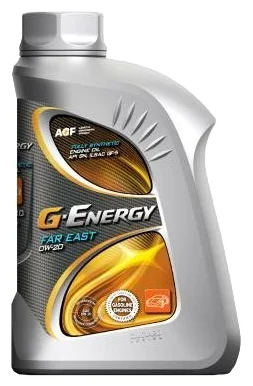
Domestic engine oil specially developed for specific Japanese requirements (SAE 0W-20, API SN ILSAC GF-5) is one of the most affordable in our market. With the price of a four-liter canister within 1,700 rubles, it is quite possible to forgive him for the expected reduction in the service interval. And the need for this is felt already according to the declared alkaline number (7.9 mg KOH / g is less than that of Shell and Idemitsu). The high-temperature viscosity according to the manufacturer's data is 8.3 mm2 / s, and the pour point is minus 45 degrees. Not the best performance, but we must not forget that we are comparing oils with a decent price difference.
Real analysis of a fresh oil sample makes it clear that low resource concerns are true. Measured alkaline oil – 7.75 mg KOH / g, high-temperature viscosity slightly above 8 mm2 / s. At the same time, the pour point is lower than the stated one (-48 degrees) – it is possible that the proportion of the thickener is somewhat reduced in a particular batch, but in general we can talk about normal compliance with the statements. Since the base oil is inevitably hydrocracking at such a price, we summarize: you should not change this oil less than 7-8 thousand kilometers, like the more expensive Idemitsu. But, since Idemitsu has a certain head start in the form of a high base number, G-Energy goes down in the rating: with an increase in the breakthrough of crankcase gases through the rings as the engine wears out, when using high-sulfur fuel, Idemitsu will 'age' more slowly.
Advantages
- Low price with wide availability in the retail network and at Gazprom's branded gas stations
- Good low temperature properties
disadvantages
- Average resource characteristics
SUBARU SN 0W-20
Rating: 4.6
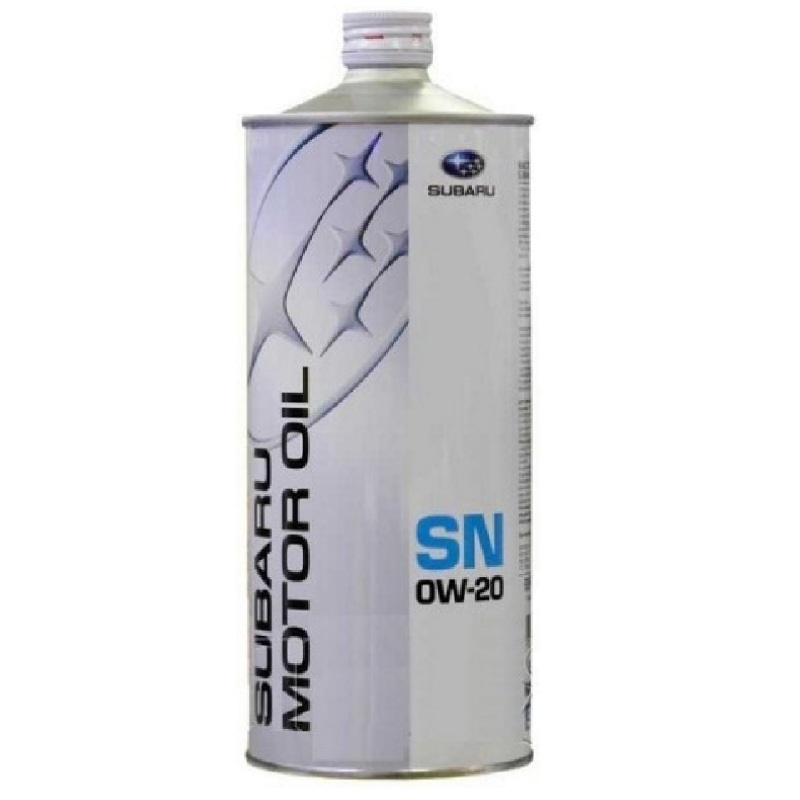
We prefer to take in the presence of laboratory analysis (since automakers themselves usually do not publish the characteristics of their 'original' oils) factory-filled engine oils as a kind of reference for comparison: in many cases they are indeed the optimal choice for the engine. However, at a price of under 3800 rubles for a 4 liter canister (at the time of this writing), the original oil Subaru for the atmospheric Forester is already losing rating points, given that such 'environmentally friendly' and 'energy-saving' oils can actually withstand a run of in the region of 7-8 thousand, and it is unprofitable to use expensive 'native' brand oil.
At the same time, there is nothing particularly impressive in hydrocracking oil (judging by the viscosity index, which has ester additives – this partly explains the price) with the company logo on the canister. The high-temperature viscosity for the “twenty” is not bad – 8.4 mm2 / s (with a standard tolerance of 6.9-9.3 mm2 / s), the base number is at the level of twice as cheap G-Energy – 7.74 mg KOH / g. The oil has a good margin for a drop in performance with mileage – it will withstand the normal service life for such engine oils. However, the volatility of 15% according to Noack is a lot, and the pour point for oil with this viscosity class is not the most impressive: -43 degrees. Therefore, taking into account the price, the original oil Subaru for Forester is definitely not the best choice, it loses even to the cheapest oil in the rating, without offering anything in return. The strangest thing is that the actual producer of the original oil on the Russian market is the Perm plant LLC LLK-International (read – Lukoil): even the 'imported' origin cannot justify the price.
Advantages
- High base number for this class of oils
- High viscosity index (over 220)
- Good high temperature viscosity stability
disadvantages
- High price
- Not the best 'winter' properties for SAE 0W-20
Best oils for Subaru Forester with a gasoline turbo engine
Mobil 1 X1 5W-30
Rating: 4.9
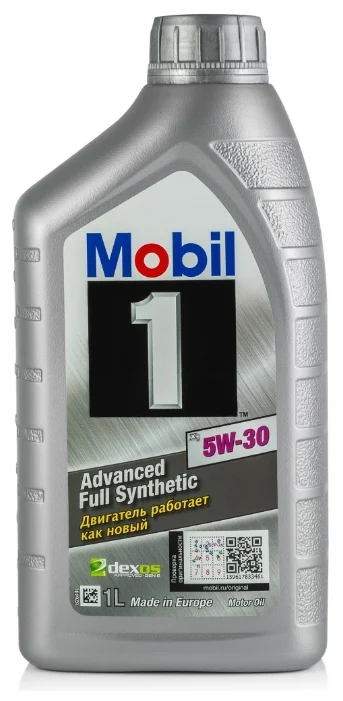
We can call this oil the optimal choice for heat-loaded supercharged engines. According to the declared quality classes, it not only fits into the requirements Subaru, but also overlaps them: according to the API, the most stringent SN Plus is declared at the moment, there is certification for ILSAC GF-5.
At the same time, the real base number of the oil according to laboratory analysis is high by the standards of its class: 9 mg KOH / g, the high-temperature viscosity according to different samples gives an average number of 11.5 mm2 / s. For the SAE 5W-30 class, the manufacturer was simultaneously able to achieve excellent low-temperature properties: the pour point of -52 degrees is even lower than what can be expected, and the oil can be said as a good option even for the cold regions of Russia. Mass fraction of sulfur is less than 0.2%, the degree of purification of the base oil is high. The base oil itself is combined, judging by the spectrogram and physical characteristics – GTL oil is added to the main share of the hydrocracking oil, polyalphaolefins and alkylated naphthalenes are present. Thus, the manufacturer has successfully balanced the price and resource of the oil: samples taken on a run of 15 thousand confirm that, in terms of decreasing alkalinity, it has just 'started approaching' the lower bar of the standard, remaining within the limits specified for SAE 5W-30 in terms of viscosity. The oil can be unambiguously recommended, especially against the background of the more expensive and lower quality 'original' Subaru SN SAE 5W-30 – it again performed so pale that we decided not to include it in the rating at all.
Advantages
- Excellent performance stability
- High detergent properties
- The minimum consumption for waste in a working engine
- Above average low temperature properties for this viscosity grade
disadvantages
- Relatively high price (almost at the level of the original)
Motul 8100 Eco-lite 5W-30
Rating: 4.8
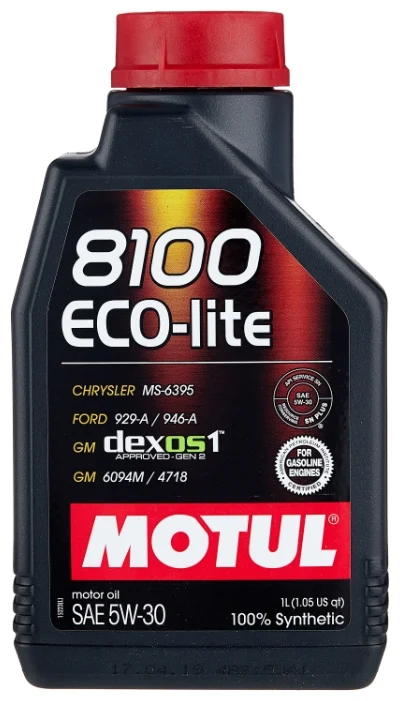
An interesting variant of engine oil, which, despite the low viscosity and limited resource expected for ILSAC GF-5, was made, on the contrary, with a clear shift in characteristics towards high temperatures. For a turbocharged boxer engine Subaru this is a serious plus – although one cannot fail to note the high price of oil, traditional for Motul.
High temperature oil viscosity – 11.4 mm2 / s with a good HTHS viscosity margin. The oil maintains its high film strength at extreme thermal loads, while conserving liners, camshaft beds and turbocharger bearings. The base number is 8.5 mg KOH / g, slightly less than that of Mobil 1 / The increase in the proportion of the thickener in the base hydrocracking oil, which provided good high-temperature properties, inevitably affected the pour point: here Motul lost as much as 13 degrees. Therefore, if Mobil 1 can be called universal for all regions of Russia, then Motul in the north without a pre-heater will be less convenient to use.
Motul withstands service life tests on samples of used oil with dignity – the oil is able to withstand standard drain intervals, remaining within the requirements of standards for viscosity and base number. The wear, based on the content of metals in the sample, is minimal, which is logical – judging by all the same analyzes, an effective additive based on molybdenum was used in the composition.
Advantages
- High stability of characteristics
- Excellent protection for a thermally loaded turbo engine
- Good detergent properties
- The increase in the proportion of the thickener is also felt in the operation of the engine – it becomes noticeably quieter than with a more 'liquid' oil of the same viscosity grade according to SAE
disadvantages
- High price
Lukoil Genesis Armortech JP 5W-30
Rating: 4.7
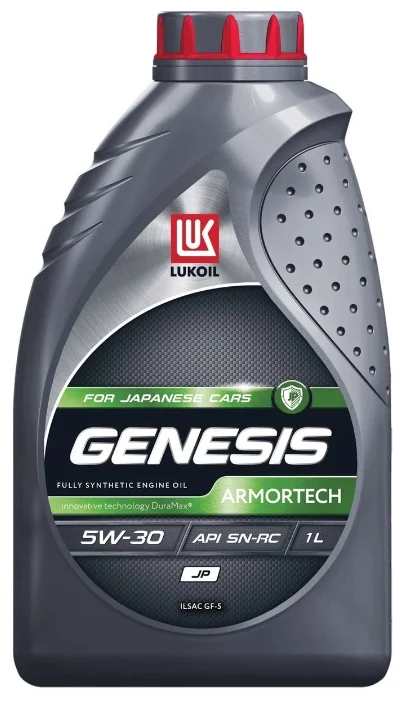
Considering that on the canister with this oil you can see the same manufacturer data as on the original oil Subaru for the Russian market, the price gap is especially impressive: if you have to pay more than 3,500 rubles for the 'original' (for 4 liters), then for 'non-original' from the same plant – about 1800. At the same time, Genesis Armortech JP oil, developed for the requirements of Japanese cars and having both the approvals we need (API SN and ILSAC GF-5), is very similar in properties to Subaru SN SAE 5W-30. The high-temperature viscosity declared in the technical documentation is 10.4 mm2 / s, the pour point is minus 41 degrees: here, unlike Motul, they played on reducing the proportion of the thickener, wishing to obtain low-temperature properties that are important for Russia.
In a real analysis, both figures are shifted even lower: the oil freezes at a lower temperature, but at the same time, it is slightly 'thinner' than promised when it is operating. The similarity in these characteristics with the original oil is very high, but at the same time the measured base number of Lukoil (8.12 mg KOH / g) is higher than stated for the 'native'.
As a result, given the price gap, Lukoil will definitely be a more profitable replacement for the original oil – it does not lose anything to it. In our rating, it receives points lower than Mobil 1 and Motul only because of the worst high-temperature properties in comparison with them, which is undesirable under heavy loads and operation in the southern regions of Russia – at least it makes sense to shorten the drain intervals.
Advantages
- The oil is more than comparable to the original at half the price
- Decent base number
- Good low temperature properties
disadvantages
- Not the best high temperature viscosity
ENEOS Premium Touring 5W-30
Rating: 4.6
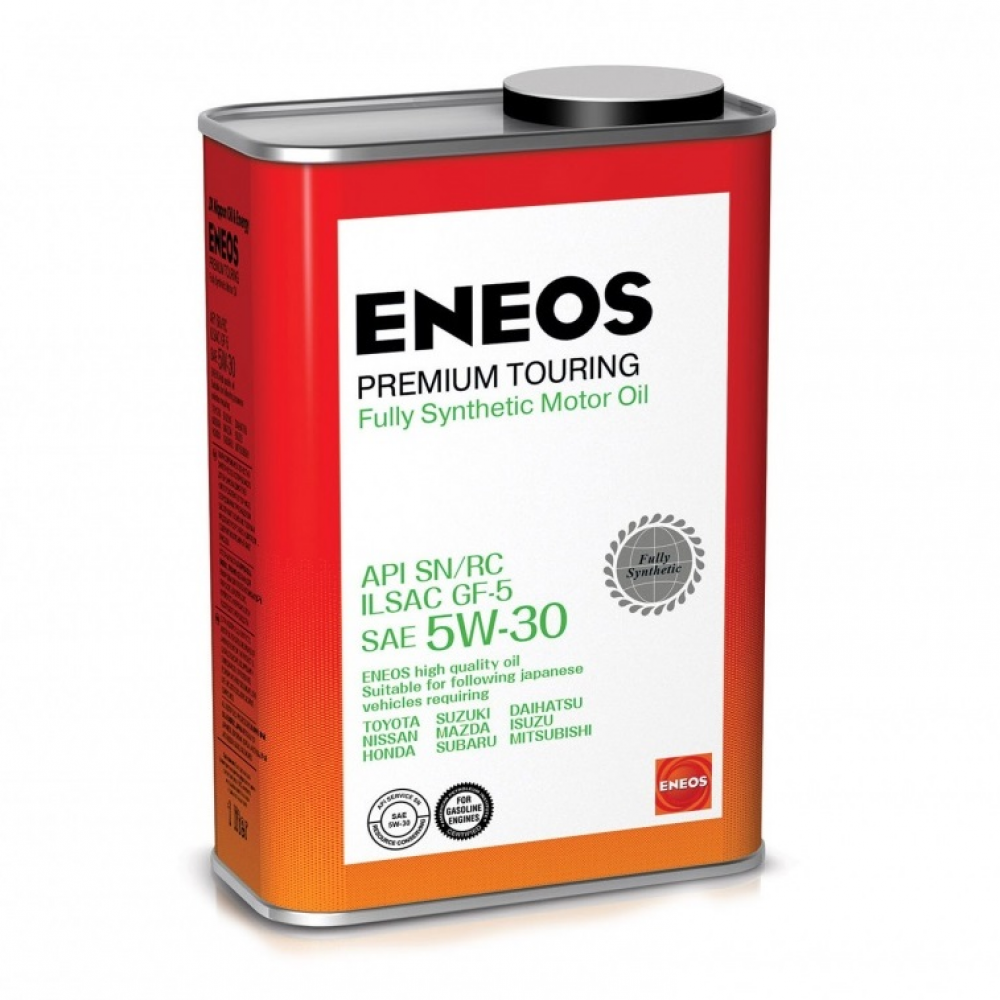
Japanese oil is offered in the same price segment as Lukoil – on average, a four-liter canister will cost about 1,800 rubles (at the time of this writing). Its declared characteristics are also not record-breaking: high-temperature viscosity at the level of 10.69 mm2 / s, low base number – 7.33 mg KOH / g. In terms of the pour point, declared as -36 degrees, ENEOS even loses to domestic oil – therefore, if Lukoil's decrease in high-temperature properties was partially justified by better starting characteristics in the cold, then ENEOS loses in this regard.
According to laboratory analysis, the oil is even slightly worse than expected: there is a 'shortage', albeit small, in both viscosity and alkalinity, the pour point is measured only as -34 degrees. For SAE 5W-30 oil, this is far from the best indicator. The only thing that ENEOS was able to stand out in was its low volatility, but in the list of properties that are critical when choosing an oil, it is far from being in the leading places, and we will definitely call Lukoil the best choice for the same money.
Advantages
- In general, for its price, oil is not bad in terms of characteristics
- Low volatility at high thermal loads can reduce waste consumption through crankcase ventilation
disadvantages
- High pour point
- Low base number
Best oils for Subaru Forester with diesel engine
Shell Helix Ultra ECT C2 / C3 0W-30
Rating: 4.9
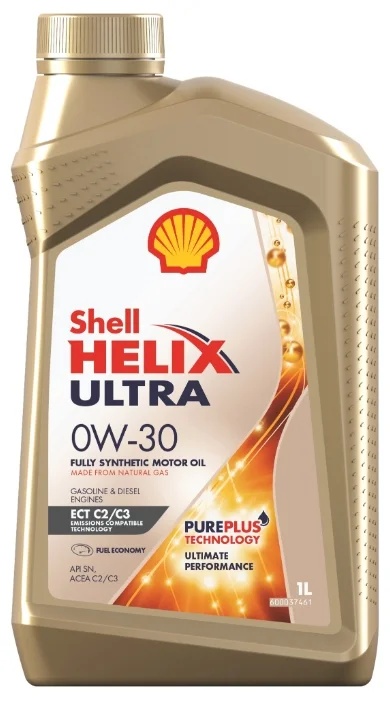
In this category, Shell is becoming the favorite of our experts. Even taking into account the fact that the technical information published by the company is traditionally stingy: a pour point of -51 degrees is promised at a sufficiently high high-temperature viscosity of 11.9 mm2 / s, data on the base number are not given. However, in the description of the oil, the company directly indicates its high detergent properties in comparison with the requirements of the declared standards – this is what interested us in the first place, potentially promising a high alkalinity for medium ash ACEA C3 oils (which is usually at the level of 6-7 mg KOH / g , which in Russia forces to reduce service intervals).
Laboratory analysis brilliantly confirms our hypothesis: with a base number of 8.81 mg KOH / g, this oil is among the leaders in our market, in combination with the use of GTL base oil, this guarantees a long oil resource. True, in terms of ash content, the oil exceeded the requirements of ACEA C3 by a few hundredths of a percent – but we cannot call this a real reason for claims to oil. The pour point according to the test was -54 degrees, the sulfur content was less than 0.2%, the volatility for low-viscosity oil was very good – 9.4% according to Noack. Before us is a uniquely high-quality oil with excellent thermal stability and a long resource – we give it first place.
Advantages
- An excellent base number for its class and a high-quality PED-base provide the oil with a high real life in the engine
- High viscosity stability
- Good low temperature properties
disadvantages
- Real ash content is high
Castrol Edge Turbo Diesel 0W-30
Rating: 4.8
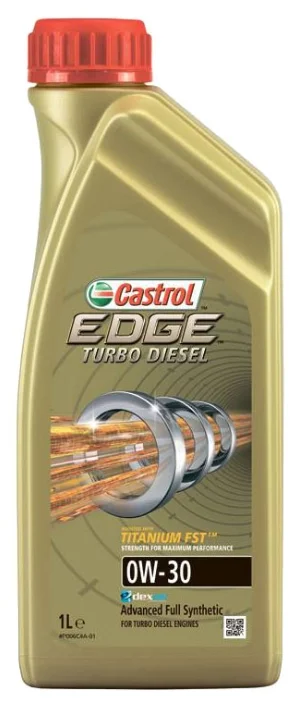
Castrol offers an oil that, in competition with Shell, loses mainly in price: a four-liter canister crosses the three thousand mark. At the same time, given the ACEA C3 quality class in the list of characteristics, it showed itself excellently in the analysis. At a high-temperature viscosity of 12.09 mm2 / s (which is close to the upper limit for SAE 0W-30), it simultaneously has a pour point of -44 degrees: in comparison with Shell, the characteristics are more shifted to high temperatures, during severe operation, but moderate frosts, we we can advise you to choose exactly Castrol. The base number is 8.69 mg KOH / g, the oil is well compatible with high-sulfur fuels, which is also confirmed by the analysis of the development – Castrol will withstand the normal service interval, maintaining sufficient alkalinity and viscosity. Sulfur in the oil is less than 0.2%, the volatility is 8%, the flash point is 245 degrees – this clearly indicates the absence of hydrocracking oil in the composition of the 'base', according to the spectrogram, pure polyalphaolefin oil was used here. The oil will not have problems with thermal stability and resource, it can keep the level of deposits in the engine to a minimum.
However, it is worth noting that while Shell goes beyond the upper limit of ACEA C3 requirements for sulphated ash content (0.06%) only by a tiny fraction, Castrol's difference was as much as 0.2%. We, of course, understand that in practice the quality of the fuel and the condition of the engine itself have a much stronger effect on the service life of the particulate filter, but we cannot but point out that a real oil sample clearly does not give the right to classify it as medium ash.
Advantages
- Excellent viscosity stability and high base number
- High detergent properties
- Low volatility
disadvantages
- Failure in ash content versus ACEA C3 requirements
- Not the best pour point for this class
Mobil 1 ESP 0W30
Rating: 4.7
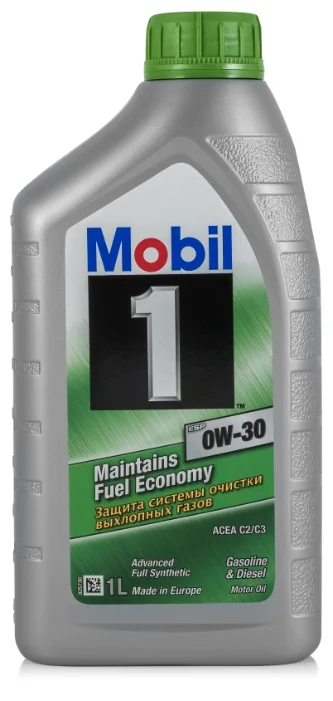
Unlike Shell and Castrol, Mobil 1 fits perfectly into the ACEA C3 requirements for ash content (0.6%), but at a high price: the declared base number is only 6.3 mg KOH / g, that is, we have a typical low-viscosity resource limited medium-ash oil, and more expensive than Shell and Castrol. The particulate filter may last longer with it, but you will have to spend significantly more money on engine oil during this time. The kinematic viscosity at 100 ° C is declared to be very high – 12.2 mm2 / s, there is no data on the pour point on the manufacturer's website, oddly enough, no.
The test of working out partially rehabilitates the oil: by the ten thousandth run, it was able to maintain a decent viscosity (11.6 mm2 / s), and the base number, although it already hints at the time that has come to be replaced (3.91 vyu KOH / g), still does not fall out from the framework of the standard. At the same time, the engine wear markers in working out are scanty – that is, we can recommend changing this oil just every 10 thousand kilometers and not worrying about the resource of the engine and the particulate filter … but the pour point of the oil remained unmeasured, therefore, for northern latitudes we We won't recommend it just in case: Shell Helix Ultra ECT C2 / C3 0W-30 is the best option for them.
Advantages
- Good service life for medium alkaline oils
- Excellent engine protection against wear
- Minimal sulfur and phosphorus content, low ash content
- Viscosity stability at high temperatures
disadvantages
- Uncertainty with low temperature properties
TOTAL QUARTZ INEO EFFICIENCY 0W-30
Rating: 4.7
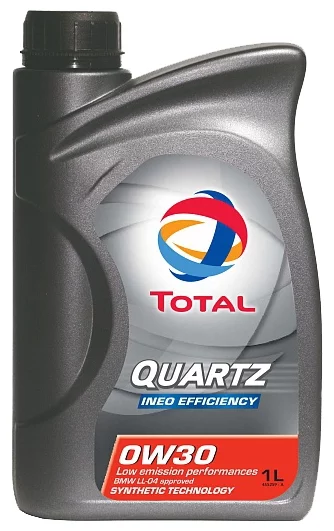
The French manufacturer usually performs well in the market of medium-ash diesel oils (namely, these correspond to the ACEA C3 quality class required for a diesel Forester): the joint work with Renault, for whose diesels Total produces 'original' oils under the Elf brand, affects. In our case, Total's positions are also strong: at a price within 2200 rubles for a 4-liter canister, the oil completely fits into the instructions of the instructions, has a declared base number of 7.5 mg KOH / g, which is very good for a medium-ash low-viscosity oil. The high-temperature viscosity according to the manufacturer is 11.6 mm2 / s, the oil has a good margin of viscosity reduction with aging. With a low viscosity index (180), the pour point is indicated as acceptable – minus 45 degrees.
Let's move on to laboratory analysis. The pour point is slightly higher than the stated (-42 degrees), the base number is noticeably lower: only 6.77 mg KOH / g. The result is still good for this class of engine oils, but such a base number when using high-sulfur fuels will definitely require a decrease in service mileage. At the same time, the oil can last much longer on high-quality fuel: the bulk of the base is not hydrocracking, but polyalphaolefin.
Advantages
- Attractive price
- High viscosity stability at high thermal loads
- A slow drop in the base number on high-quality fuel – in this case, the oil is able to normally work out the normal drain interval
disadvantages
- Sensitivity to fuel quality, especially on used engines
Attention! This rating is subjective and does not constitute an advertisement and does not serve as a purchase guide. Before buying, you need to consult with a specialist.


